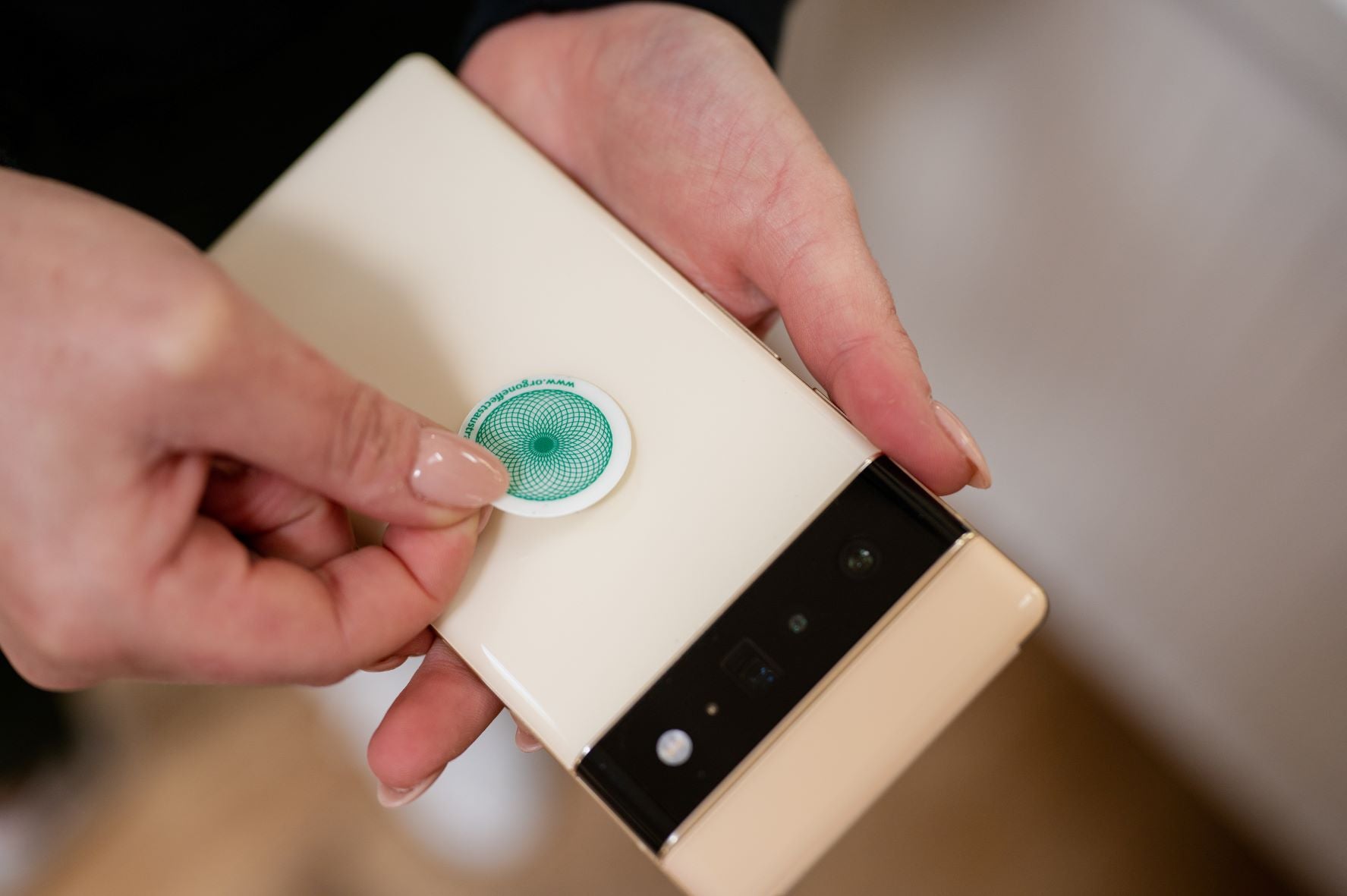If you’re looking for a way to protect yourself from EMF radiation, you may have come across the concept of “earthing.” Earthing is the practice of connecting your body to the Earth’s natural electrical energy in order to encourage balance and well-being. One popular method of earthing is using an earthing rod, which can be inserted into the ground outside your home.
Proper earthing is an essential safety component of your home and/or business, electrical system. For this reason, local building codes and the National Electrical Code (NEC) require one or more earthing rods on your property. These rods are simple and inexpensive, but they are essential for protecting your electrical equipment and appliances and should not be overlooked.
Earthing rods combined with EMF protection products can give you the greatest relief from bothersome and painful symptoms. In this post, we’ll take a look at how Earthing Rods work and whether or not they’re effective for EMF protection.
What is an Earthing Rod?
An earthing rod, also known as an earthing electrode or grounding rod, is a metal shaft typically installed by professional electricians. It is used to ensure the safety of owners and their families by creating an earthing field. Simply put, a grounding rod grounds electricity and prevents possible static discharge voltages like lightning from putting you at risk during a storm.
An earthing rod is typically located near your main electrical panel and is often copper or galvanized steel. They measure about ½ inch in diameter and 8 to 10 feet. It must be electrically connected to your main electrical panel to provide an approved earthing connection.
If a single earthing rod has a resistance of less than 25 ohms, building codes permit its use as the sole earthing device. If the resistance of an earthing rod is over 25 ohms, at least an extra earthing rod is needed.
What is the Purpose of Earth Rod?

The purpose of earthing is to provide a safe path for excess current to flow away from people and equipment. By creating this path, any stray electrical current will be safely diverted to the ground rather than causing harm. A grounding rod helps direct high-voltage spikes to the ground and away from appliances, televisions, computers, outlets, etc.
If your home has outlets that are not grounded, a power surge can be not only dangerous but deadly, particularly if the current enters the ground through the human body. This can occur if you touch an ungrounded outlet or plug at the wrong time – electricity can flow between your feet on the floor and the part of the body touching the outlet, causing burns, nerve injuries, and even death if the surge is strong enough.
If the electrical surge makes its way through the structural elements of your home, it can cause a fire. And there is always the possibility of current flowing directly through electronics and appliances plugged into ungrounded outlets, potentially damaging them.
What is the Best Material for an Earthing Rod?
Earthing rods can be made of different materials. It’s important to consult a professional electrician to ensure that you are installing the correct earthing rod for your home. Here are some materials used for earthing rods:
Copper – This is generally the most common material used for earthing rods. Specifically, these types of earthing rods are made by coating a steel rod with copper. Studies show that earthing rods made of copper electrodes last longer than other types of earthing rods.
Stainless Steel – Stainless steel grounding rods are relatively pricey compared to other alternative materials. Stainless steel is known to be particularly resistant to corrosion and is therefore preferred in particularly saline environments.
Galvanized Steel – Galvanized steel is crafted by adding a layer of zinc to the steel to protect it from possible rust. Galvanized steel grounding rods are the most cost-effective grounding rod option; however, they aren’t as reliable as copper grounding rods. External factors such as salt can cause the zinc layer to wear out and they have a lifespan of about 15 years compared to copper earthing rods which have a lifespan of around 40 years.
How Do I install an Earthing Rod?

Earthing rods are usually installed vertically on the ground but can be installed horizontally as well depending on your situation. There are no exact specifications as to exactly where a grounding rod should be placed; however, it’s best if it’s installed at least 60cm away from any building structure to avoid possible interference, and also near your electrical panel.
You should also make sure that the grounding rod is installed in an accessible location where you can easily work. The earthing electrode is then used to connect the rod to the electrical panel in your home. Installing an earthing rod can be tricky, particularly since you can damage the existing underground electrical wiring in your home accidentally.
How Deep Should an Earthing Rod Be?
According to the regulations, an earthing rod must have a minimum depth of 2.40 m vertically in the ground. This means that one end of the grounding rod must not be less than two meters deep. An experienced electrician can make sure your grounding rods are properly installed.
Earthing Rods Alternatives
There are alternatives to using earthing rods. You can connect the earthing system to the concrete foundation reinforcement as well as to the earthing rings. However, earthing rods are the preferred method unless you encounter very loose soil or rocks.
Additionally, surge protection devices (SPDs) need a good ground connection to work effectively. Without a good grounding system with proper grounding rods, surge protectors can’t disperse the surge to the ground.
Whole Home Surge Protector protects against voltage spikes limiting excess electrical current by blocking its flow, protecting the home from blackouts and burnt-out appliances. For lightning surge protection devices to do their job, the correct grounding rods must be correctly installed.
If you frequently change light bulbs, computers, or appliances, it could be a sign of a faulty earthing system. Earthing is very important to the electrical health of your business or home, but it is often overlooked and neglected.
Can Earthing or Grounding Reduce EMF Exposure?

Mobile electronic appliances such as cell phones, tablets, and laptops give off low-level forms of electromagnetic radiation, known as ELF (extremely low frequency) emissions and radiofrequency (RF).
Although earthing has been demonstrated to be a good way to counteract many of the effects of electromagnetic radiation, it cannot prevent electromagnetic radiation from entering your body. In a way, grounding can also increase your EMF exposure, as it attracts EMF radiation from the environment.
Earthing has been proven to minimize body-induced voltages generated by ELF exposure, which are continuously given off by ungrounded electronic equipment, as well as those with power cords attached.
Sadly, earthing and grounding cannot completely protect us from electromagnetic radiation when using cell phones, tablets, laptops, and other electronic devices directly on our bodies.
Ways to Minimize Exposure to Electromagnetic Radiation
- Reduce the amount of EMF sources around you. Keep electronics out of your bedroom and eliminate unnecessary sources like smart devices and Bluetooth speakers or headphones. Turn on Airplane Mode when possible, to get rid of wireless emissions from your appliances.
- Keep EMF sources away from your body. Electromagnetic radiation poses fewer health risks the farther the source is from your body and is more dangerous if a mobile device touches your head or upper body (including your heart and reproductive system). Using your phone to send text messages carries minimal risk.
So, remember to keep the screen at least 30cm away from your face and chest when texting. Keep your wireless router ten feet away from you. Keep your cell phone and other mobile devices at least 1.20 meters away while you sleep. Avoid falling asleep with your phone on your chest, under your pillow, or on the bedside table.
- Limit the time you spend on your devices. Limiting the time spent in front of a screen is a general and effective rule to protect yourself from harmful radiation, among other benefits. When you’re not using your electronics, simply keep them away from the body until you’re actively using them again.
- Use wired accessories whenever possible. Wired devices give off less EMF radiation because they don’t use wireless signals to connect. Connecting your keyboard, mouse, and speakers can minimize exposure to EMF, and wearing anti-radiation, air tube headsets that plug into your phone effectively eliminates EMF radiation from your head.
- If you are having difficulty with any of these steps, consider using an EMF radiation protector like the Phone Computer Bluetooth Wi-Fi Radiation Protection, which can help minimize EMF frequencies from getting to your body. This highly effective product provides you and your loved ones with maximum radiation protection, while at the same time preventing the ill effects of DNA damage and the formulation of brain tumors, and works in a far superior way to any shield can.
You can also invest in wearable EMF protection jewelry like the Harmony Wear Personal Protection Jewelry, Quantum Orgone Pendants, Yellow Stellar Pendant, and many more that offer on the go protection.
Grounding Rods Can Be a Great Addition to These EMF Reduction Practices
For individuals who are overly sensitive to EMFs, earthing or grounding rods combined with EMF protection and EMF reduction techniques can give you the greatest relief from bothersome and painful symptoms. However, everyone can benefit from daily grounding and reduce their exposure to electromagnetic radiation.
Despite the brief existence of advanced technology, most Americans own mobile phones as well as other mobile appliances. The prolonged health consequences of this technology aren’t fully understood, but there is plenty of research showing links to adverse health effects. As experts in this field, we want to do our part to help people understand that there are several ways to minimize their exposure to harmful electromagnetic emissions.



